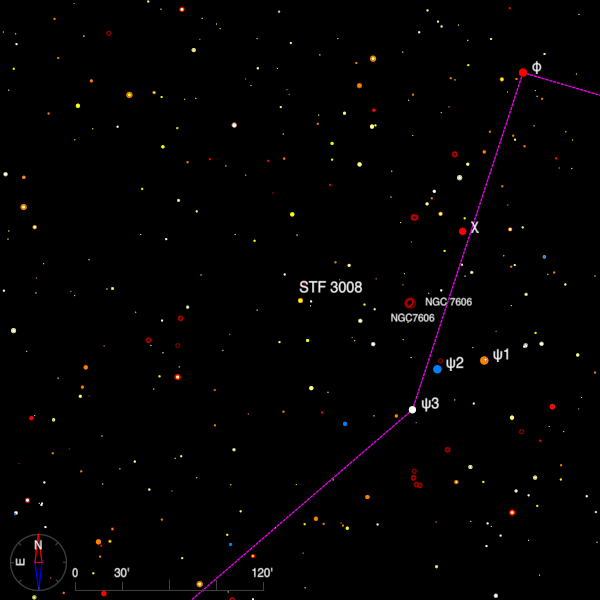October 2021 - Double Star of the Month
The fine pair STF 3053 (00 02 36.1 +66 05 56) is located on the border between Cassiopeia and Cepheus and is about 1 degree south of the large emission nebula Cederblad 214. It is marked on the Cambridge Double Star Atlas 2nd Edition (CDSA2) but not labelled.

This is an easy object for the small aperture with the components of magnitudes 6.0 and 7.2 currently separated by 15".2 in PA 70 degrees, although the separation has decreased from 18" over 200 years. I have not measured this pair, possibly because the high declination makes access using a German-mounted refractor awkward. There is a third star, V = 11.0, at 99" and 291 degrees.
Gaia EDR3 has pinned down the distance to all three stars, in the case of the main pair to better than 1% - the mean value is 803 light-years. The faint companion is 33 light-years further out, but with a significantly greater error.
One of the double stars which William Herschel included in his last list of discoveries is H N 112, better known as STF 3008 (23 23 45.3 -08 27 36) which lies in Aquarius and is again included in CDSA2 but again is unlabelled. It can be found as the faint point about one degree north following the three stars marked psi, and also, incidentally, one degree due west of the spiral galaxy NGC 7606.

This is certainly an optical pair but is noticeable for the measurable change in aspect over a number of years. I measured this pair with the Cambridge 8-inch three times with the following results: 2000 - 153 degrees, 5".97, 2005 - 151 degrees, 6".27 and 2014 - 149 degrees, 6".67. The stars are magnitudes 7.2 and 7.7 and easily seen in smaller apertures.
Bob Argyle - Double Star Section Director